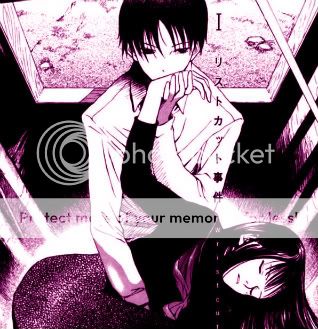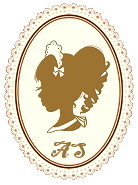The History of manga originates from scrolls dating back to the 12th century,however whether these scrolls are actually manga is still disputed, though its believed they represent the basis for the right-to-left reading style. Other authors report origins closer to the 18th century. Manga is a Japanese term that generally means "comics" or "cartoon", literally "whimsical sketches." Historians and writers on manga history have described two broad and complementary processes shaping modern manga. Their views differ in the relative importance they attribute to the role of cultural and historical events following World War II versus the role of pre-War, Meiji, and pre-Meiji Japanese culture and art.

The first view emphasizes events occurring during and after the U.S. Occupation of Japan (1945-1952), and stresses that manga was strongly shaped by United States cultural influences, including U.S. comics brought to Japan by the GIs and by images and themes from U.S. television, film, and cartoons.According to Sharon Kinsella, the booming post-war Japanese publishing industry helped create a consumer-oriented society in which publishing giants like Kodansha could shape popular taste.

Astro Boy is the first Japanese television series that embodied the aesthetic that later became familiar worldwide as anime.It originated as a manga in 1952 by Osamu Tezuka, revered in Japan as the "God of Manga."After enjoying success abroad, Astro Boy was remade in the 1980s as Shin Tetsuwan Atomu, known as Astroboy in other countries, and again in 2003. In November 2007, he was named Japan's envoy for overseas safety.An American computer-animated 3-D film based on the original manga series by Tezuka was released on October 23, 2009.
Shōjo, shojo or shoujo (少女, shōjo?) is a Japanese word originally derived from a Chinese expression written with the same charactersliterally mean young/little and woman respectively.In Japanese, these kanji refer specifically to a young woman approximately 7–18 years old.Shōjo can often be translated with the English word girl.A work intended and primarily written for females. Usually involves a lot of romance and strong character development.
Popular shojo manga:Kimi ni Todoke,Yamato Nadeshiko Shichi Henge,Special A etc.

Shōnen (少年?),shonen, or shounen, is a Kanji word literally meaning few years and generally referring to a typical boy, from elementary school through high school age.A work intended and primarily written for males. These works usually involve fighting and/or violence but often contains a sense of humor and strong growing friendship-bonds between the characters.Popular shonen manga:Naruto,Bleach,One Piece,Code Geass etc.

Often synonymous with yuri, this can be thought of as somewhat less extreme. "Girl's Love", so to speak.Yuri usually involves intimate relationships between women and can focus either on the sexual or the emotional aspects of the relationship, the latter sometimes being called shōjo-ai by western fans .Shiroi Heya no Futari is the first Yuri manga dealing with the romance between an "average blonde" and a "stately brunette" at a girls' boarding school, .Popular Shoujo Ai/Yuri manga:Candy Boy,Hayate x Blade,Strawberry Shake Sweet etc.

Often synonymous with yaoi, this can be thought of as somewhat less extreme. "Boy's Love", so to speak.Yaoi (やおい?) also known as Boys' Love, is a popular Japanese term for female-oriented fictional media that focus on homoerotic or homoromantic male relationships, usually created by female authors. Originally referring to a specific type of dōjinshi (self-published works) parody of mainstream anime and manga works, yaoi came to be used as a generic term for female-oriented manga, anime, dating sims, novels and dōjinshi featuring idealized homosexual male relationships.The two participants in a yaoi relationship (sometimes also in yuri) are often referred to as seme ("attacker",攻め or せめ) and uke ("receiver",受け)The seme and uke are often drawn in the bishōnen style and are "highly idealised",blending both masculine and feminine qualities.Shonen Ai/Yaoi manga:Loveless,Junjo Romantica,Black Knight etc.

A work involving and usually concentrating on all types of large robotic machines.
Popular mecha manga:Neon Genesis Evangelion,Code Geass,Astro Boy,Asura Cryin' etc.

Harem, broadly speaking, is a loose subgenre of anime and manga characterized by a protagonist surrounded, usually amorously, by three or more members of the opposite sex.The most common and practically tantamount scenario is a male surrounded by a group of females; when this is conversed it is informally referred to as a reverse harem.The term is derived from the Arabic "harem", modernly defined outside its original meaning as "a group of women associated in any way with one man or household"Popular harem manga:Ai Kora,Ichigo 100%,11 eyes etc.

Girls dressing up as guys, guys dressing up as girls.. Guys turning into girls, girls turning into guys.. I think you get the picture.Popular Gender Bender manga:Versailles no Bara,1/2 Prince,Ai Ore,Artificial Maiden,Maria Holic etc.

Literally "Woman". Targets women 18-30. Female equivalent to seinen. Unlike shoujo the romance is more realistic and less idealized. The storytelling is more explicit and mature.

Seinen means "young Man." Manga and anime that specifically targets young adult males around the ages of 18 to 25 are seinen titles. The stories in seinen works appeal to university students and those in the working world. Typically the story lines deal with the issues of adulthood.

Possibly the line between hentai and non-hentai, ecchi usually refers to fanservice put in to attract a certain group of fans.

Deals with series that are considered profane or offensive, particularly with regards to sexual content.

Mangaka (漫画家?) is the Japanese word for a comic artist or cartoonist. Outside of Japan, manga usually refers to a Japanese comic book and mangaka refers to the author of the manga, who is usually Japanese. As of 2006, about 3000 professional mangaka were working in Japan.[1]
Some artists may study for a few years at an art college, manga school, or take on an apprenticeship with another mangaka, before entering the world of manga as a professional artist. However, there are some that just start in manga, without being an assistant by applying to contests that various magazines run. For example, Naoko Takeuchi, author of Sailor Moon, who won such a contest sponsored by Kodansha, and Osamu Tezuka, creator of Astro Boy started out without being an assistant.
A mangaka will slowly rise to prominence through recognition of their ability when they spark the interest of various institutions, individuals or a demographic of manga consumers. For example, there are various contests which prospective mangaka may enter, sponsored by some of the leading manga editors and publishers in the field. They are also recognized for the number of manga they run at one time.
Info:






Δεν υπάρχουν σχόλια:
Δημοσίευση σχολίου